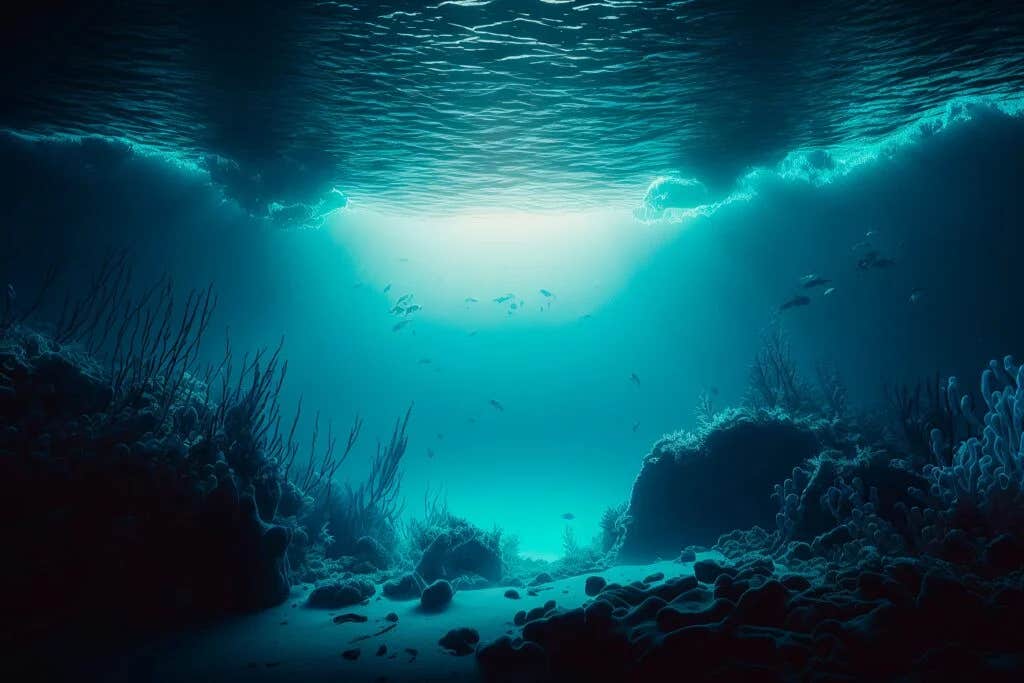Ocean darkening: The hidden crisis affecting marine life today
New research highlights global ocean darkening, threatening marine life and ecosystems dependent on sunlit waters.

Global ocean darkening over two decades threatens marine life, ecosystems, and essential ecological processes. (CREDIT: CC BY-SA 4.0)
The vast, sunlit waters of the ocean’s surface, known as the photic zone, nurture 90% of marine life. Sunlight and moonlight in this crucial region guide marine creatures and maintain global ecological balance. Yet, over recent decades, these vital zones have grown darker, and new research reveals troubling consequences for marine ecosystems around the globe.
Shrinking Sunlit Waters
The photic zone extends roughly 200 meters below the ocean's surface, forming the base for countless marine ecosystems. But a recent study published in Global Change Biology shows alarming changes. Between 2003 and 2022, scientists observed that over 21% of the world’s ocean—an area larger than South America—became noticeably darker. This reduction in available sunlight threatens marine species dependent on these waters for survival.
By analyzing satellite data from NASA’s Ocean Colour Web, scientists at the University of Plymouth and Plymouth Marine Laboratory examined how deep sunlight penetrated ocean waters. Their research pinpointed significant reductions in photic zone depths—more than 50 meters—in roughly 9% of global waters. Astonishingly, some regions saw depths decrease by over 100 meters.
"Our results provide evidence that such changes cause widespread darkening," said Dr. Thomas Davies, Associate Professor at the University of Plymouth. "This reduces the ocean area available for animals that rely on the sun and the moon for survival and reproduction."
Causes Behind the Darkening
Ocean darkening occurs as increased plankton, organic matter, sediment, and dissolved substances obstruct sunlight. These particles scatter and absorb light, diminishing how far it travels underwater. Researchers attribute coastal darkening primarily to agricultural runoff and heightened rainfall, which introduce more nutrients and sediment into waters near shorelines.
In open ocean regions, changing ocean currents, sea surface temperatures, and shifting algae blooms are major factors. Areas heavily impacted include portions of the Arctic, Antarctic, and regions influenced by the Gulf Stream. Scientists emphasize these regions' vulnerability due to their sensitivity to climate change.
Related Stories
"The ocean is far more dynamic than it is often given credit for," explained Professor Tim Smyth of Plymouth Marine Laboratory. "Light levels vary dramatically within a 24-hour cycle, profoundly affecting marine organisms."
Ecological Impacts of Ocean Darkening
Marine creatures rely heavily on natural light patterns driven by the sun and moon. Sunlight promotes photosynthesis, vital for phytoplankton growth, forming the foundation of ocean food webs. Many marine animals also depend on these daily and monthly cycles of light for key behaviors, such as migration, spawning, and hunting.
One prominent example is diel vertical migration, the world’s largest daily migration event. Billions of tiny organisms rise to surface waters at night and retreat to deeper, darker waters during the day. As the photic zone diminishes, these creatures become compressed into smaller vertical spaces, intensifying competition for limited food and habitat.
Reduced light availability may disrupt synchronized spawning events, a critical process for coral reefs and numerous marine species. Species that depend on moonlight cues for breeding could fail to reproduce effectively, leading to population declines.
"If the photic zone shrinks significantly," warned Smyth, "species reliant on light-driven behaviors must cluster closer to the surface. This change increases competition, potentially reshaping marine ecosystems fundamentally."
Global Consequences
The broader implications of shrinking photic zones extend far beyond individual species. These zones influence global carbon cycling and ocean productivity, essential in regulating Earth's climate. Reduced sunlight penetration may decrease primary productivity, affecting global fish stocks, which humans heavily depend on for food.
Moreover, diminished light penetration could alter ocean chemistry, impacting oxygen levels and nutrient cycles. Such disruptions could cascade throughout marine ecosystems, affecting biodiversity and ecosystem stability globally.
Despite these concerning findings, researchers also noted a small but notable brightening of ocean waters. Approximately 10% of oceans, covering 37 million square kilometers, became lighter, although scientists are still assessing the significance of these shifts.
Monitoring Ocean Health
The detailed analysis by the University of Plymouth researchers underscores the importance of continual ocean monitoring. Utilizing satellites, they tracked ocean changes at high resolution. Their methods blended satellite imaging with advanced modeling, capturing daily and lunar cycle variations in photic depth.
This data highlighted the profound changes taking place across coastal and open ocean regions alike. The Baltic Sea, for example, suffers significant darkening due to nutrient runoff and sediment from land-based rainfall.
A Call to Action
Scientists emphasize the need for global awareness and action in response to these findings. "We rely on the ocean and its photic zones for the air we breathe, the fish we eat, our climate regulation, and the planet’s overall health," Davies stated. "These findings represent genuine cause for concern."
Addressing ocean darkening involves curbing nutrient and sediment runoff, improving coastal management, and mitigating climate change. Enhanced monitoring and global cooperation remain critical to preserving the health of marine ecosystems for future generations.
As the oceans continue to change, researchers urge immediate attention and action to protect the delicate balance of life sustained by sunlight and moonlight beneath the waves.
Note: The article above provided above by The Brighter Side of News.
Like these kind of feel good stories? Get The Brighter Side of News' newsletter.



